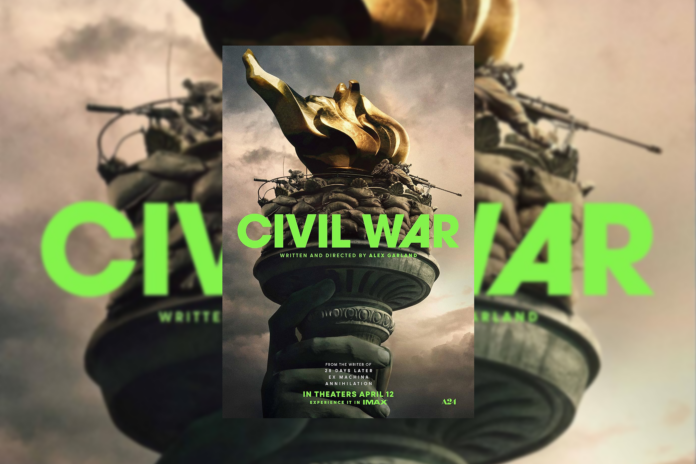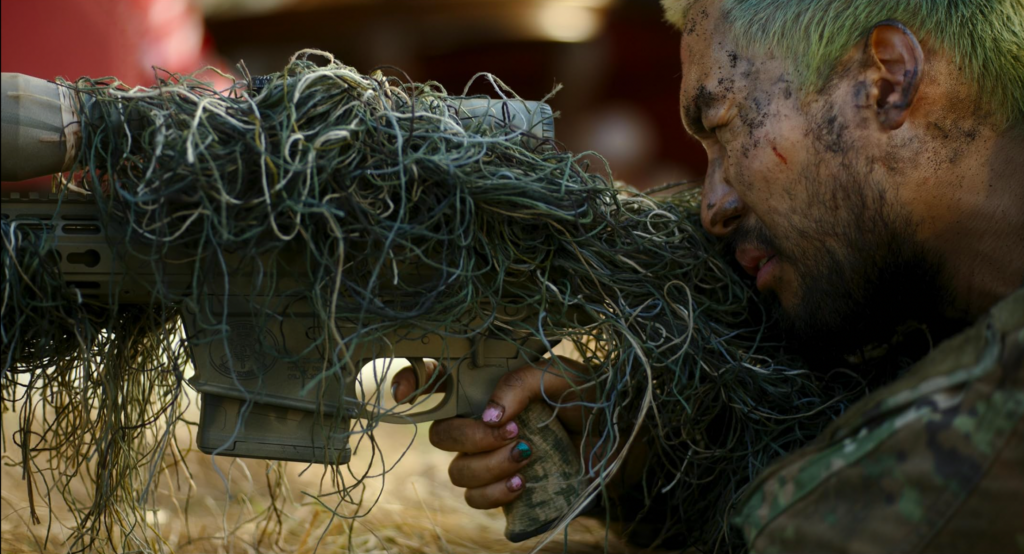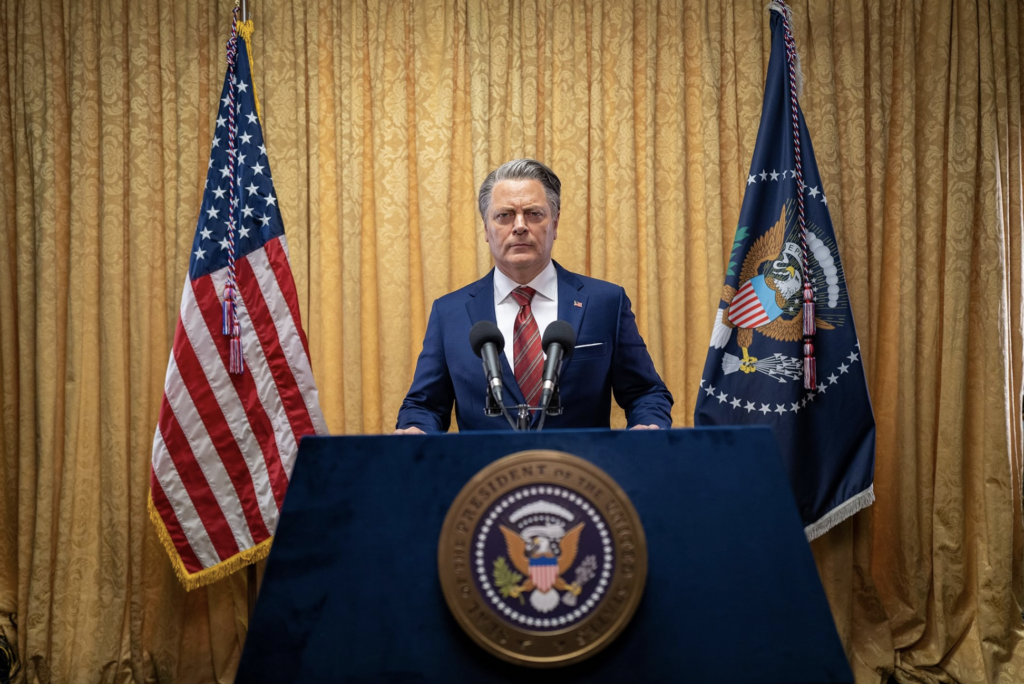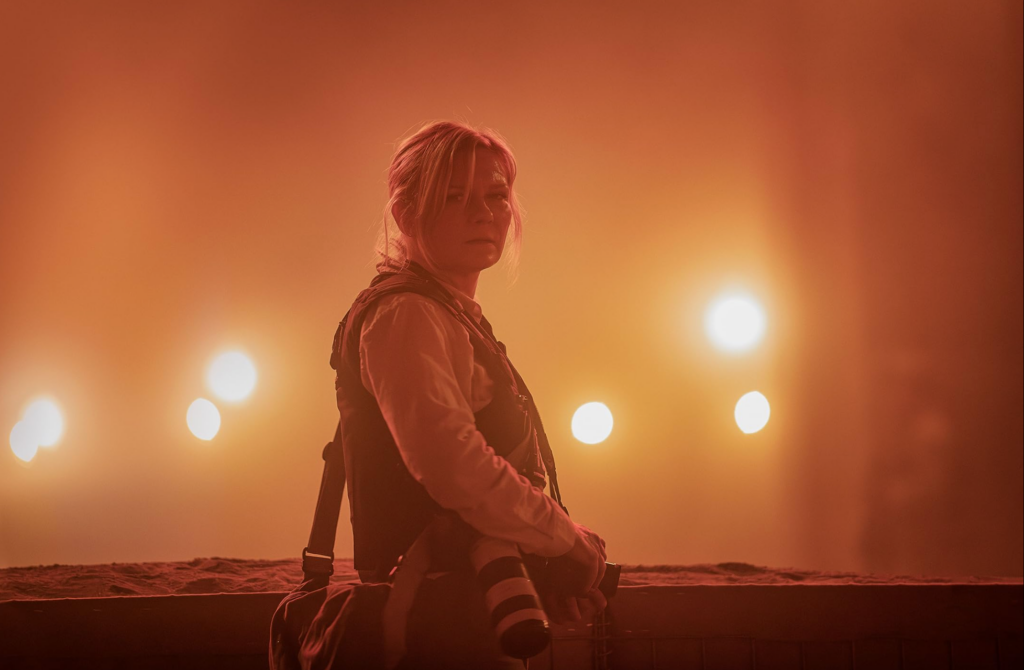
Known for his striking visuals and for exploring themes like grief or AI in previous films like Annihilation or Ex-Machina, Alex Garland has decided to tackle American Culture in his latest historical-fiction blockbuster: Civil War.
Taking place in the last days of a potential modern-day civil war conflict, the film follows a handful of journalists as they make their way from New York to D.C. to interview the president. Kirsten Dunst leads the film as a weathered photographer whose images of foreign conflict zones start to blur with the carnage in front of her during this trip across fictionalized America.
The film is structured similarly to a road trip movie, giving vignettes of towns and conflicts across primarily the northeastern part of the country, but one of the film’s most interesting creative choices is also one of its most controversial.

While it’s no mistake that the film’s imagery is inherently political, it does not explore the origins or ideologies behind the war in the film. Instead, it focuses on how individuals would be impacted in a war-like scenario.
Relying on imagery like Proud Boy-Esque militiamen in Hawaiian shirts and tactical gear, the film displays how eager Americans from across the spectrum would be ready to take up arms.
Balancing scenes with incredibly violent tensions with others set in an unaffected suburban community that “doesn’t like getting into politics” serves as an accurate satire of the attitude of Americans on the far sides of the political spectrum and the vast majority of people just trying to go about their daily lives.
For journalists and media professionals, of which Rowan has many, this film highlights some of the darkest and most impactful moments in their prospective careers. Caelie Spaeny stars alongside Dunst as Jessie, a young woman looking to begin her career in photojournalism who tags along with the group on their journey south.
As someone studying and working in journalism, I could understand the morbid curiosity behind Jessie’s eyes as she found herself capturing moments of conflict. The film does a good job of balancing her eager excitement with Dunst’s character’s anxiety and trepidation.

A scene that highlights the film’s purpose happens just after the halfway point. As the team navigates their way through back country roads, they find themselves in between sniper fire on someone’s property. Despite identifying themselves as press, they find themselves being fired upon by an unnamed perpetrator in a house.
After finding cover the group meets the other side of the battle. Two young men you could have plucked out of any Zumiez in America dressed in modern military fatigues, armed with a sniper rifle and a spotting scope. Amid fire, the group of journalists asks these two men which side they’re on and how the conflict arises. The armed men laugh at the questions about politics and ideology and ask if the group realized they’re being fired upon or not before quickly dispatching the hidden assailant firing upon them.
By zeroing in on this particular aspect of the conflict, Garland highlights how quickly things like ideology, politics, or standard ethics and morals are thrown out the window in a deadly scenario like the one unfolding. The scene also highlights a shift in the protagonist’s attitudes because despite walking away from it physically unharmed, the stakes of their work were brought to attention.
The film does have its flaws however, Garland missed a mark by not going into detail about the origins of the war outside of the “Antifa Massacre” mentioned early on in the film. While he and most of the messaging in the film come across as relatively progressive/liberal, the vague call to action could be seen by some viewers as confirmation bias of negative perceptions they have around people politically different from themselves.

The focus on “traditional” photo and investigative journalism by having Jessie and other characters use older photography methods or interviewing seemed a bit too self-indulgent. If a civil war broke out in the United States right now, I don’t think media outlets would let their photographers shoot on film for practical reasons.
While not impactful to the film’s contents, Garland and studio A24’s use of AI art in the promotional material for the film is in relatively poor taste and prevents artists from making a living for themselves.
Ultimately, the Civil War is an excellent encapsulation of this moment in time if a not-too-unlike war were to break out. Worth watching on the big screen or a rewatch on streaming in a few months.
For comments/questions about this story DM us on Instagram @thewhitatrowan or email the.whit.arts@gmail.com






Fascinating how a fictional film about journalists in war is interesting enough to be covered as to sympathize with fictional journalists being attacked in a warzone, but the 97 journalists that Israel has murdered in Gaza don’t cause any soul searching. Funny how that works…